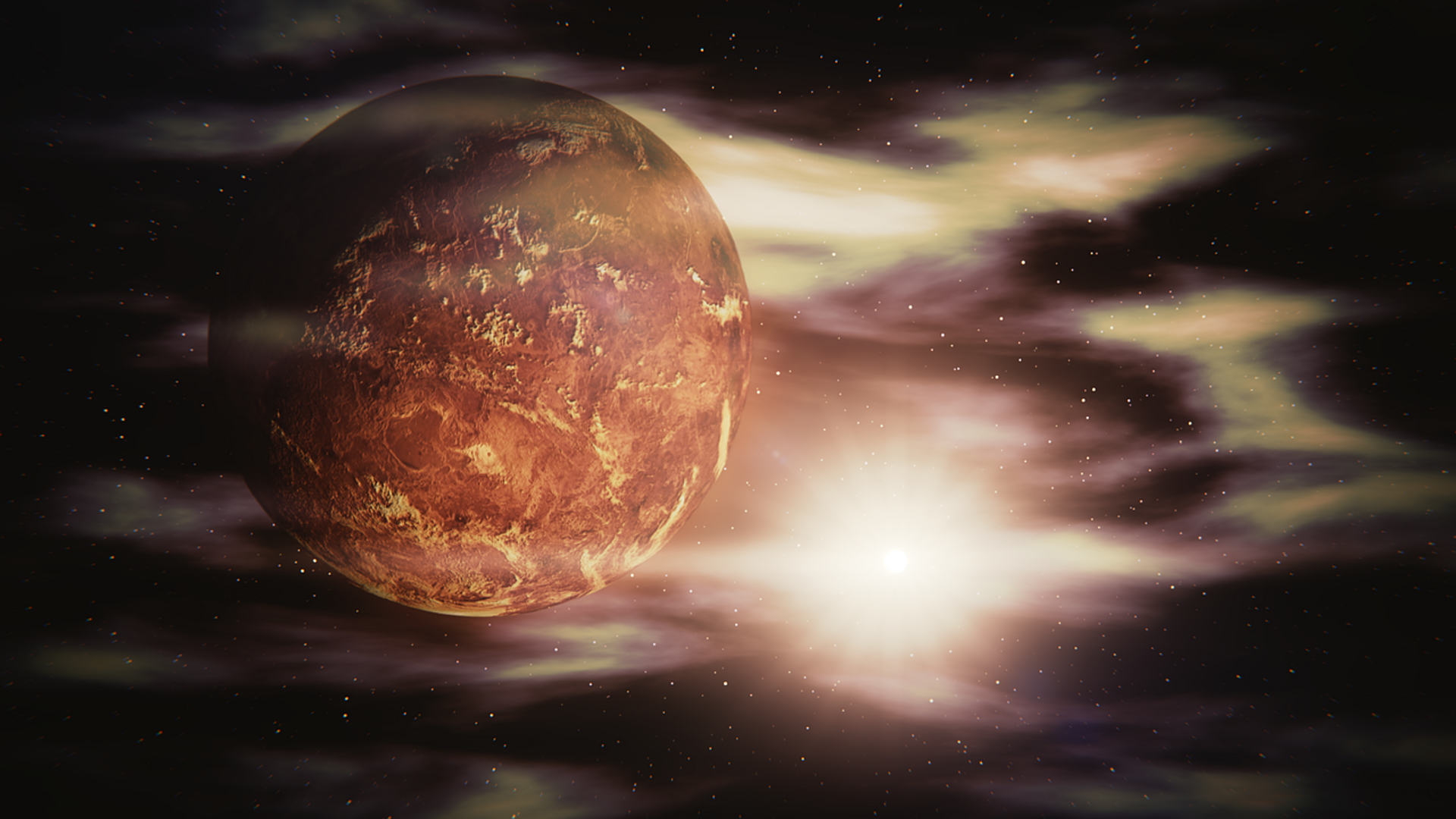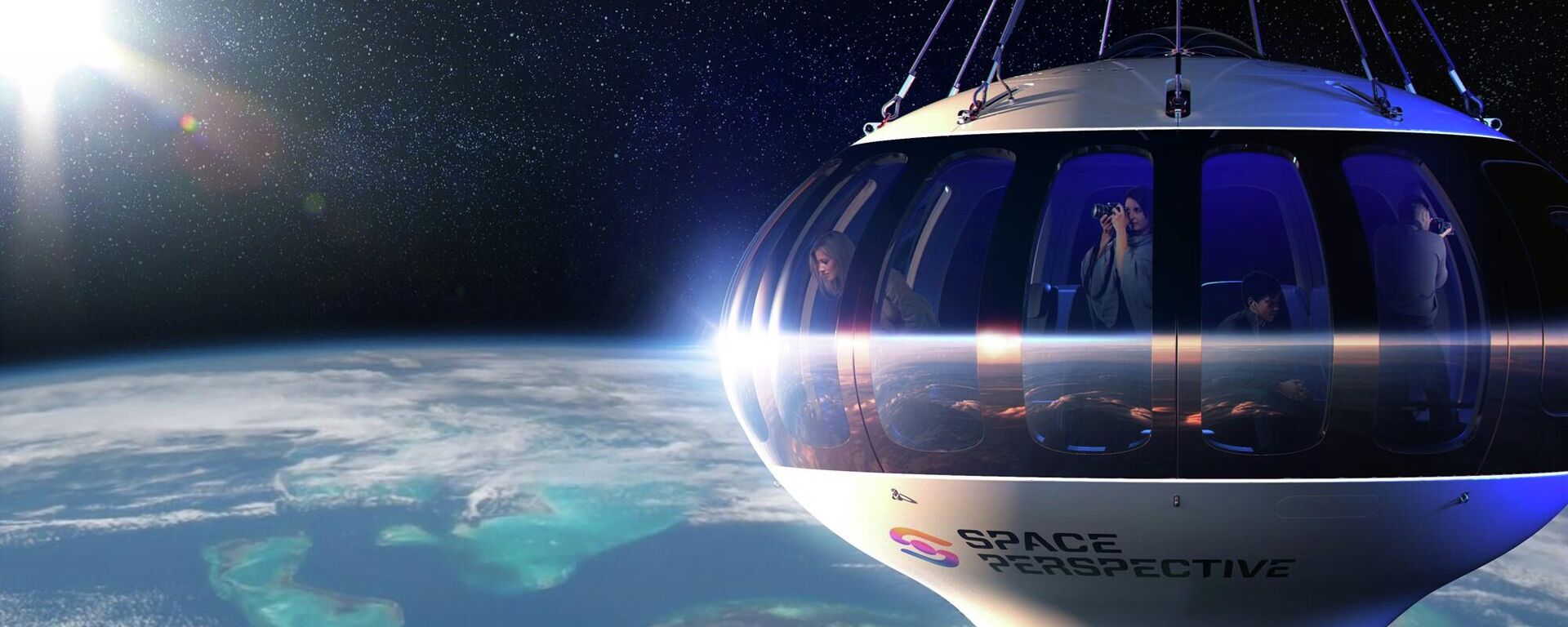https://sputnikglobe.com/20220420/venus-rotates-because-of-its-atmosphere-not-gravity-says-newly-published-paper-1094920121.html
Venus Rotates Because of its Atmosphere, Not Gravity, Says Newly-Published Paper
Venus Rotates Because of its Atmosphere, Not Gravity, Says Newly-Published Paper
Sputnik International
Venus rotates slowly, taking 243 Earth days to complete one rotation, but that is faster than one would expect a planet so close to our sun to rotate; Venus is... 20.04.2022, Sputnik International
2022-04-20T18:20+0000
2022-04-20T18:20+0000
2023-04-12T17:02+0000
venus
science & tech
gravity
space
https://cdn1.img.sputnikglobe.com/img/107687/01/1076870163_0:0:1280:720_1920x0_80_0_0_e32978927bc37ea7874195b7137a734c.png
Tidal locking is when a smaller object rotates around a larger object without spinning, like the moon around Earth or Mercury around the sun. Venus is close enough to the sun that it should be tidal locked but instead it spins slowly.The reason it rotates at all is because of its extremely thick atmosphere. Its extremely fast winds drag along the planet’s surface, loosening the sun’s grip on the planet enough that it rotates, albeit very slowly. So slow in fact, that a day on Venus is longer than a Venusian year, the planet only takes 224 Earth days to make its trip around the sun.Interestingly, Venus spins the opposite way of most planets in our solar system, it rotates from east to west, meaning that if you could stand on the planet and see through its thick atmosphere then you’d see the sun rise in the west and set in the east. Scientists are unsure why the planet rotates in reverse. One theory is that the planet used to rotate the same way as most planets in our solar system, but then it slowly became tidal locked and then reversed due to the strong atmospheric “tidal torques” put on the planet.A University of California Riverside scientist argues in a new paper published in Nature Astronomy, that it means we should be paying closer attention to Venus’ features when we study exoplanets (planets outside of our solar system)."We think of the atmosphere as a thin, almost separate layer on top of a planet that has minimal interaction with the solid planet," said Stephen Kane, UC Riverside astrophysicist and lead paper author via Phys.org. "Venus' powerful atmosphere teaches us that it's a much more integrated part of the planet that affects absolutely everything, even how fast the planet rotates."One way astronomers discover exoplanets is by looking for the small gravitational pull the planets have on the star they rotate around. This means a large number of planets astronomers are likely to find will be in the tidal locked zone. However, while we are using an Earth-like model to guess what those planets actually look like, Kane argues that we should be looking at Venus as an example of how we model those exoplanets in the future."Venus is our opportunity to get these models correct, so we can properly understand the surface environments of planets around other stars,” Kane explained.Venus, which has a surface temperature over 900 degrees Fahrenheit due to its runaway greenhouse effect, is very similar to Earth and has often been called its twin. Not only will studying Venus give us an opportunity to understand exoplanets but also better predict how the atmosphere and greenhouse gasses may affect our planet in the future.
https://sputnikglobe.com/20220413/neptune-balloon-capsule-will-make-space-tourism-much-cheaper-but-it-will-still-cost-you-1094745166.html
Sputnik International
feedback@sputniknews.com
+74956456601
MIA „Rossiya Segodnya“
2022
News
en_EN
Sputnik International
feedback@sputniknews.com
+74956456601
MIA „Rossiya Segodnya“
Sputnik International
feedback@sputniknews.com
+74956456601
MIA „Rossiya Segodnya“
venus, science & tech, gravity, space
venus, science & tech, gravity, space
Venus Rotates Because of its Atmosphere, Not Gravity, Says Newly-Published Paper
18:20 GMT 20.04.2022 (Updated: 17:02 GMT 12.04.2023) Venus rotates slowly, taking 243 Earth days to complete one rotation, but that is faster than one would expect a planet so close to our sun to rotate; Venus is in the tidal lock zone, meaning it shouldn’t rotate at all.
Tidal locking is when a smaller object rotates around a larger object without spinning, like the moon around Earth or Mercury around the sun. Venus is close enough to the sun that it should be tidal locked but instead it spins slowly.
The reason it rotates at all is because of its extremely thick atmosphere. Its extremely fast winds drag along the planet’s surface, loosening the sun’s grip on the planet enough that it rotates, albeit very slowly. So slow in fact, that a day on Venus is longer than a Venusian year, the planet only takes 224 Earth days to make its trip around the sun.
Interestingly, Venus spins the opposite way of most planets in our solar system, it rotates from east to west, meaning that if you could stand on the planet and see through its thick atmosphere then you’d see the sun rise in the west and set in the east. Scientists are unsure why the planet rotates in reverse.
One theory is that the planet used to rotate the same way as most planets in our solar system, but then it slowly became tidal locked and then reversed due to the strong atmospheric “tidal torques” put on the planet.
A University of California Riverside scientist argues in a new paper published in Nature Astronomy, that it means we should be paying closer attention to Venus’ features when we study exoplanets (planets outside of our solar system).
"We think of the atmosphere as a thin, almost separate layer on top of a planet that has minimal interaction with the solid planet," said Stephen Kane, UC Riverside astrophysicist and lead paper author via
Phys.org. "Venus' powerful atmosphere teaches us that it's a much more integrated part of the planet that affects absolutely everything, even how fast the planet rotates."
One way astronomers discover exoplanets is by looking for the small gravitational pull the planets have on the star they rotate around. This means a large number of planets astronomers are likely to find will be in the tidal locked zone. However, while we are using an Earth-like model to guess what those planets actually look like, Kane argues that we should be looking at Venus as an example of how we model those exoplanets in the future.
"Venus is our opportunity to get these models correct, so we can properly understand the surface environments of planets around other stars,” Kane explained.
Venus, which has a surface temperature over 900 degrees Fahrenheit due to its runaway greenhouse effect, is very similar to Earth and has often been called its twin. Not only will studying Venus give us an opportunity to understand exoplanets but also better predict how the atmosphere and greenhouse gasses may affect our planet in the future.


